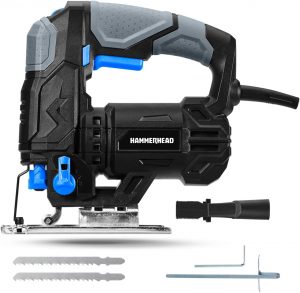Table of Contents
Introduction
Jigsaw is a piece of protean equipment that a workshop needs to have. It’s a piece of exceptional cutting equipment that is suitable for making straight and even curved cuts on a vast variety of materials such as timber, plastic, iron, tile etc. What makes the jigsaw easy to employ is that it can be used on just about any material. And choosing the right cutting blade is what is needed. The points below shows what to consider in choosing blades for a jigsaw :
Type of blade shank
In choosing a jigsaw blade, it’s imperative to consider the blade shank. There two types of jigsaw blade shanks namely;
A universal shank (U-shank)
A universal shank is also is known as U-shank. It’s named after the cut-out at the top of the shank that forms a “U”. It is known as the most popularly used blade design for jigsaws until the emergence of the tool-free blade locking system making the U-shank go into extinction in terms of style. Especially when a number of jigsaws won’t accede the U-shank blades.
A Tang shank (T-shank).
Tang shank also called T-shank, is the most popular and most wanted form of blade shank today. It’s designed to snap into the blade fastener of jigsaws that proffer a tool-free blade changing. As most jigsaws are now designed with this feature, they are the kinds of shanks that are needed. Most producers now use T-shank blades as high quality, which makes it facile to change blades between different machines.
Blade Material
The next thing to put into consideration is what the blade is made from. The element of the blade is a determinant for the ability of the blade to cut through specific materials. Every blade is made from some kind of metal-like material. The most popular jigsaw blades are made out of high carbon steel, high-speed steel, bi-metal, and tungsten carbide.
The material to be cut determines the type of blade to use. Using the right blade is very imperative. There are four main classifications of the jigsaw and employing the right one ensures a neat, accurate cut, less swerving, and even ensures the longevity of the blade. The four main classifications are:
High carbon steel blades: The high carbon steel blades are so resilient and supple. And in terms of cost, they are inexpensive. They are usually used in cutting woods.
High-speed steel blades: These types of blade are tough, long-lasting, and resistant to heat making them a prime design suitable for metal, wood, and even plastics.
Bi-metal jigsaw blades: These blades are made from two different types of metal and are super long-lasting. They are the best design for cutting thick materials in wood and metal.
Tungsten carbide blades: Tungsten blades are the best when it comes to resisting heat. Its durability is the best of all jigsaw blades. These blades are the best design for cutting through ceramics, metal, or tiles.
Teeth Per Inch (TPI)
The next thing to put into consideration when choosing a jigsaw blade is the number of teeth per inch also known as TPI. The number of teeth the blade has will have an effect on the standard and pace of the cut. Blades that are made with few teeth will make speedy, uneven cuts. On the other hand, blades designed with more teeth will make a sluggish but even cuts.
The Blade’s length
Regularly choosing the correct length of the blade for the material being cut is yet another important step. It’s not advisable to make a partially deep cut with just any jigsaw. Doing this may cause damage to the blade or even the saw. If it’s a very short blade that can hardly cut the workpiece, it’s important to employ a saw blade that is lengthy.
Conclusion
Each blade fits into a different saw, just like the blade of a miter saw is different from the blade of a jigsaw. So, When the right blade is chosen for a jigsaw, it makes it versatile. Allowing it to be useful for numerous applications. With the right and perfect blade, a neat, speedy, and even cuts can be achieved on a vast variety of material.

